You searched for: 专业推特全球粉丝排行榜top100【TG飞机:@bapingseo】谷歌play抖音排名【TG电报:@bapingseo】摩尔多瓦专业谷歌推广引流【Telegram:@bapingseo】乐彩软件安转手机娱网棋牌大连线上从哪买彩票有什么网站可以赌足球比赛?Tr9ULS/lT9gth.html
<< Previous | Displaying results 76-100 of 308 for "专业推特全球粉丝排行榜top100【TG飞机:@bapingseo】谷歌play抖音排名【TG电报:@bapingseo】摩尔多瓦专业谷歌推广引流【Telegram:@bapingseo】乐彩软件安转手机娱网棋牌大连线上从哪买彩票有什么网站可以赌足球比赛?Tr9ULS/lT9gth.html" | Next >>
-
Voyage of the St. Louis
ArticleIn May 1939, the German transatlantic liner St. Louis sailed from Germany to Cuba. Most of the passengers were Jews fleeing Nazi Germany. Learn more about the voyage.

-
1942: Key Dates
ArticleExplore a timeline of key events during 1942 in the history of Nazi Germany, World War II, and the Holocaust.

-
Halle
ArticleHalle an der Saale was a satellite camp of Buchenwald concentration camp. It was established by the Nazis in Saxony, Germany in 1941.
-
Kato Dicker Nagy
ID CardThe fourth of five children, Kato was born to a Jewish family who owned a successful furniture store and lumberyard in Ujpest, five miles from Budapest. As a young girl, Kato enjoyed singing and playing the violin in her family "orchestra" in their large home. She was also athletic, and loved to swim, bicycle and play tennis. Best of all, Kato enjoyed rowing on the Danube with her friends. 1933-39: Newly married, Kato moved to Zagyvapalfalva, a town northeast of Budapest with only five or six Jewish…
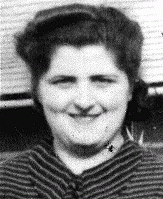
-
Erzsebeth Buchsbaum
ID CardErzsebeth was raised in Budapest, where her Polish-born Jewish parents had lived since before World War I. Her father, a brush salesman, fought for the Austro-Hungarian forces in that war. The Buchsbaums' apartment was in the same building as a movie house. There was a small alcove in the apartment, and Erzsebeth's brother, Herman, made a hole in the wall so that they could watch the films. 1933-39: Every summer Erzsebeth, Herman, and their mother took a special trip to Stebnik, Poland, to visit Grandma.…
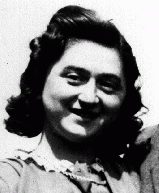
-
Edek Blonder
ID CardThe Blonder family lived in a two-room apartment in the back of a store. Edek was the third of eight children. His father eked out a meager living by tutoring students in Jewish subjects, and beginning in 1930 he worked distributing food vouchers to the poor. 1933-39: After graduating from secondary school, Edek was invited to play soccer professionally on the local Club Maccabi team, which was part of a Jewish soccer league. Club Maccabi arranged for him to attend trade school to learn cabinet making at…

-
Sam Spiegel describes conditions in a forced-labor camp
Oral HistoryIn 1942, Sam was forced into a ghetto in his hometown and assigned to work in a munitions factory. In 1944 he was transported to Auschwitz and then forced to work in a train factory. He survived eight days on a death march after the evacuation of Auschwitz by the Nazis. He was liberated by Soviet units in January 1945. He lived in a displaced persons camp in Germany where worked for the United Nations Relief and Rehabilitation Administration. In 1947, he immigrated to the United States.

-
Colonel Richard R. Seibel describes US Army procedures for burial of the dead after liberation of Mauthausen
Oral HistoryIn June 1941, Richard was ordered to active duty in the US Army. After a period of training, he was sent to Europe. He entered Austria in April 1945. A patrol came upon the Mauthausen camp and Richard was appointed to take command of the camp. He organized those inmates who had survived in the camp until liberation in May 1945, and brought in two field hospitals. After 35 days in Mauthausen, he was transferred to a post in the Austrian Alps.
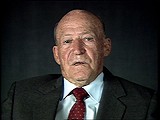
-
Herbert Oppenheimer describes activities of the Hitler Youth
Oral HistoryHerbert Oppenheimer was born on January 4, 1926, in Berlin, Germany. He lived with foster parents, who were Seventh-Day Adventists. While living with his foster parents, he had to join Hitler Youth along with everyone else in his class at school. During this time, he learned that he was Jewish. The school consequently expelled him from the Hitler Youth. All prospective members of the Hitler Youth had to be "Aryans." He had to leave his foster parents in April 1939, and lived in an orphanage run by the…
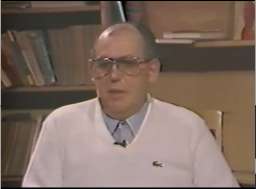
-
SS and the Holocaust
ArticleLearn more about the SS and the organization’s involvement in perpetrating the Holocaust.
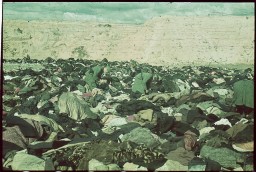
-
The Search for Perpetrators
ArticleThousands of Nazi criminals were never arrested. Learn more about the postwar efforts to bring Nazi perpetrators to justice.

-
Women during the Holocaust
ArticleUnder the Nazis, Jewish and other “non-Aryan” women were often subjected to brutal persecution. Learn more about the plight of women during the Holocaust.
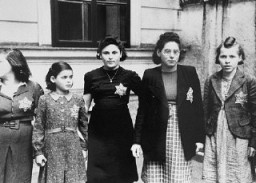
-
Collaboration
ArticleTo perpetrate the Holocaust, Nazi Germany relied on the help of allies and collaborators from across Europe, including governments, institutions, and individuals.

-
Book Burning
ArticleBook burning is the ritual destruction by fire of books or other written materials. The Nazi burning of books in May 1933 is perhaps the most famous in history. Learn more.

-
Sobibor: Key Dates
ArticleExplore a timeline of key events in the history of the Sobibor killing center in the General Government, the German-administered territory of occupied Poland.

-
The Oneg Shabbat Archive
ArticleBegun as an individual chronicle by Emanuel Ringelblum in October 1939, the Oneg Shabbat underground archive became the secret archive of the Warsaw ghetto.

-
David Bayer
ArticleDavid Bayer lived in Kozienice, Poland. Explore his biography and learn about his experiences during World War II and the Holocaust.

-
The Great Depression
ArticleLearn about causes, scope, and impacts of the Great Depression, including how it played a role in Adolf Hitler's emergence as a viable political leader in Germany.
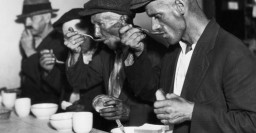
-
Hitler Youth "Youthfest" badge
ArtifactThis badge shows the Hitler Youth insignia and Nazi German national symbol superimposed over ring bearing the raised text, "Deutsches/Jugendfest 1936." Beginning in 1933, the Hitler Youth and the League of German Girls had an important role to play in the new Nazi regime. Through these organizations, the Nazi regime planned to indoctrinate young people with Nazi ideology. This was part of the process of Nazifying German society. The aim of this process was to dismantle existing social structures and…
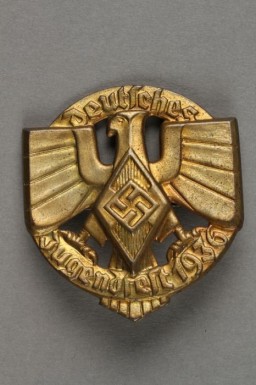
-
Hitler Youth uniform
ArtifactHitler Youth summer uniform jacket with an armband and insignia designating the regiment and district to which the member belonged. Beginning in 1933, the Hitler Youth and its organization for girls and young women, the League of German Girls, played an important role the new Nazi regime. Through these organizations, the Nazi regime indoctrinated young people with Nazi ideology, including antisemitism and racism. All prospective members of the Hitler Youth had to be "Aryans" and "genetically healthy."…
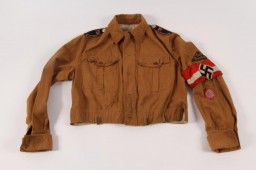
-
Hitler Youth knife and case
ArtifactHitler Youth knife and case shaped like a military bayonet, with the emblem of the Hitler Youth, emphasizing the paramilitary nature of the organization.

-
Romani (Gypsy) musician's violin used in a prewar musical band
ArtifactViolin owned by Rita Prigmore and originally used by her father, who played with his four brothers in a band in Germany before World War II. Rita and her family were members of the Sinti group of Roma (Gypsies). She and her twin sister Rolanda were born in 1943. Rolanda died as a result of medical experiments on twins in the clinic where they were born. Rita and her mother survived the war and moved to the United States, before returning to Germany to run a Sinti human rights organization that sought to…
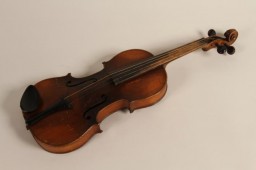
-
European rail system, 1939
MapThe European rail network played a crucial role in the implementation of the Final Solution. Jews from Germany and German-occupied Europe were deported by rail to killing centers in occupied Poland, where they were killed. The Germans attempted to disguise their intentions, referring to deportations as "resettlement to the east." The victims were told they were to be taken to labor camps, but in reality, from 1942 onward, deportation meant transit to killing centers for most Jews. Deportations on this…

-
Photograph showing Margarida, Helene Reik's granddaughter, in Brazil
PhotoPhotograph showing Margarida, Helene Reik's granddaughter, playing on a field in Teresopolis, Brazil, in April 1940. After her deportation to the Theresienstadt ghetto in Czechoslovakia, Helene yearned to record what was happening to her. This photograph was sent to Helene, who used it as paper for her diary in Theresienstadt. Helene’s makeshift diary offers wistful memories of her husband and parents who died before the war, loving thoughts of her family who had left Europe in 1939, and a firsthand…

-
Perpetrators
ArticleThe “Final Solution” was perpetrated by the SS along with other Nazi institutions and professionals. Learn more about key perpetrators of the Holocaust.

